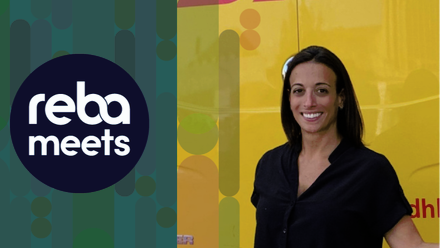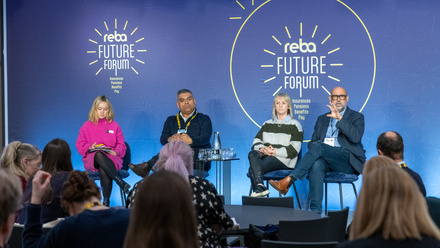Mark Goodlake of Norgine on implementing a consistent international recognition scheme

REBA caught up with Mark Goodlake, head of reward at pharmaceutical company Norgine, to discuss how they developed their reward and recognition scheme following a period of growth and change.
When legacy approaches become a risk
Recognition has always been a part of the reward approach at Norgine. However, as the company grew, it became apparent that the approach to recognition had become ad hoc, and there was no joined-up methodology across the business.
“I work with our Remuneration Committee and we were getting a variety of ad hoc requests for recognition awards for various different things. While they weren’t huge sums, they were coming to the attention of the Remcom,” explains Goodlake. “In the past it was acceptable to work like that because everyone knew everyone else and so we could take a view on it, but as the company grew that became more difficult to do consistently.”
As a result, the COO asked that a global framework be put in place to manage this process in a consistent and fair way across the business. He was concerned about their approach for several reasons:
- Lack of transparency: the Remcom could only see some recognition proposals – so did that mean that in some parts of the business there was no recognition at all? Were some actions being taken locally that they didn’t know about?
- Governance: there was a lack of governance around reward and recognition amounts and processes
- Calls for a framework: parts of the business had been asking for clarity over the recognition process.
- Reward strategy: the business is aiming to be more transparent about its reward strategy and how reward processes work – so this was an opportunity to improve.
Recognition at Norgine
“We’ve introduced a very simple tiered scheme. We’ve tried to provide criteria of what performance would be needed to justify a gold, silver or bronze award,” says Goodlake. “It’s having something that people can understand and which is applied in a consistent way, whatever part of the business you’re in.”
When deciding on the type of award or how much to allocate Goodlake says, it’s important to factor in the type of workforce you have, as well as your own internal resources to run the scheme. For instance, Norgine currently just uses cash as vouchers were becoming an administrative burden.
The bronze award
This is for day-to-day recognition within a team. The governance is fairly light at this level to give managers the opportunity to recognise people quickly.
The silver award
For more significant achievements. These have to be signed off by the function head/country head.
The gold award
These are aimed at those who have made a big impact on the company, possibly over a long period of time (typically project based but not always). These awards are remuneration committee approved.
Special awards
Above the Gold award are special awards for exceptional circumstances where something has been achieved that is seen as really driving the business forward in terms of innovation or in terms of one of their values.
Ongoing challenges around the recognition scheme
At the moment the company has around 1,600 people globally and so their current approach is working. However, this may need to change as the organisation continues to change.
“I can see that at some point soon we will have to review the scheme to see if there is consistency across the business and to ensure that people understand the criteria. The other thing we need to do some more thinking about is how we help managers understand when it’s right to think about a recognition award, which isn’t as easy as it sounds,” says Goodlake.
He highlights that complications, such as how to recognise people who already receive bonuses for project work, can make decisions more difficult.
“There’s an education piece about the different tools you have in the reward ‘kit bag’,” explains Goodlake. “I’d urge managers to see recognition as one of the things they could use in different situations to motivate and inspire. It’s just part of the reward armoury.”
He adds that it’s important to demonstrate that there is a multi-layered reward approach. “You don’t have to just use pay increases or bonuses to recognise, and sometimes monetary recognition isn’t needed. It’s mainly about giving managers the tools and equipment they need to make reward judgments.”
Future direction of recognition
Take up of the new recognition scheme has been good in the first three to six months and was well received. But, as with any new employee benefit or initiative, it has to be reviewed and maintained.
“When you launch something you get an uptick. I’m not sure if it’s fact or feeling, but I suspect the curve might be going down a bit in terms of using the scheme because there’s not been the publicity around it. So we need to think about refreshing it as part of the strategy, education and training,” he says.
Goodlake also wants to revisit the budgets around their recognition scheme. “We put it in quickly so it was hard to get the budgeting spot on. We need to make that more transparent, so that people don’t think they’re running down their budgets. I wouldn’t want people to not make a recognition payment because they’re worried about budget.”
They also aim to introduce an IT system to underpin the scheme, as well as link it to their company values and behaviours.
Advice to others
“What I’ve learned from other companies I’ve worked in is that recognition can become high-stakes. Suddenly the original size of the award isn’t enough. Someone argues it should be doubled and then increased again… and you lose sight of what you’re trying to do,” explains Goodlake. “You don’t need to make the awards ridiculously high – it’s more that it conveys the message. So be careful you don’t over-commit, especially at the beginning.”
Any recognition scheme has to fit within a broader reward strategy, and Goodlake warns that you have to get wider reward fundamentals right first. That helps to avoids cynicism that recognition is being used to distract from shortcomings in other aspects of pay and reward.
“You need to get the criteria clear about what you need to do to trigger an award, and get award levels spot on so they appeal to individuals and are affordable,” he concludes.
The author is Dawn Lewis, content editor at REBA.






